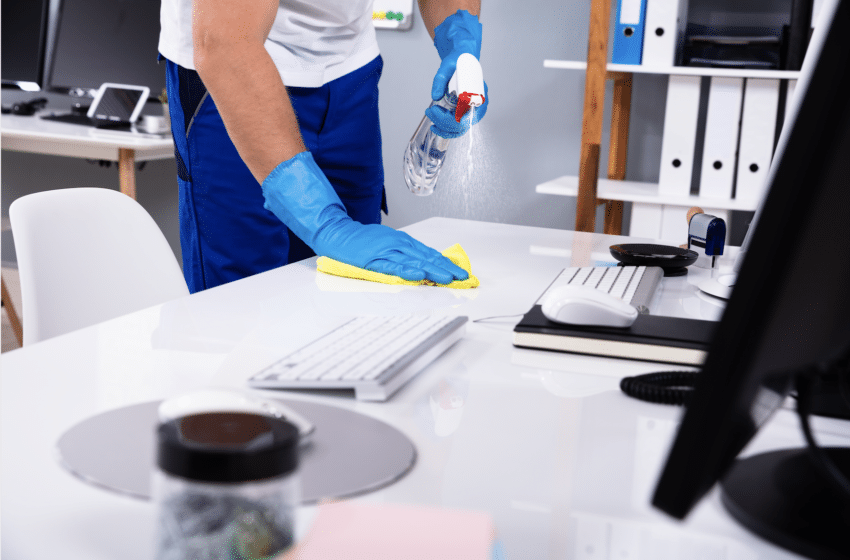The Texas Workplace—After the Pandemic

Welcome to the height of the most unusual summer Texas has seen in some time.
As phased reopening continues—against the backdrop of protests against racism and police violence in every major city in the state—the number of new coronavirus cases continues to inch up. It currently seems that there are different public health and epidemiological pictures for nearly each of Texas’ 254 counties, and even more for each municipality.
Where government guidelines aren’t available to help map a safe direction toward reopening, businesses should provide their own—just as colleges, universities, and schools across the state are working hard to do—evaluating and re-evaluating available data and best practices while balancing the interests of many stakeholders.
If companies can operate efficiently with a dispersed, at-home workforce (and if employees have sufficient tools to do so), continuing to work remotely is the safest option. But many businesses in Texas must open their doors to survive. Managing risk to individual employees, clients, and the enterprise itself is vital. It’s going to take a lot of creativity and imagination to get everyone back in the workplace.
What’s the initial step? Considering what we’re going through and what we’ve gone through, making employees and clients feel safe and understood is the first thing that needs to happen. Employers who demonstrate sincere care about those who work for the company will lay a strong, positive foundation for what could be a long road back to normal. Invest in employees’ goodwill. Ask about their family members. Find out what their challenges are as they get back to work. Reassure them that they are valued and that you will work with each individual and be as flexible as you can during these extraordinary times.
Next step: Consider three layers of security necessary for institutional recovery.
1. Getting Back to the “Back and Forth.”
As we have already started to see, cars will refill Texas highways faster than many might have expected as more people resume their commutes. But highways are not the only way people travel to and from the office, especially in Texas’ urban centers. As travel to the office picks back up, managers should provide recommendations to help people stay safe.
If your employees rely on mass transit, consider flexible schedules that allow them to avoid the most crowded times. If they take the bus, remind them that they can ask to have windows opened for better air circulation. Encourage them to wear masks on all types of public transit. On busses, light rail, trams and the subway, commuters should consider gloves to avoid high-touch surfaces and use high alcohol-based hand sanitizer as soon as they get off.
These may all seem like obvious, everyday actions, but the virus is far from eliminated in Texas. As this pandemic has dramatically demonstrated, we are still adjusting to the minor practices that reduce risk, and we should not relax into a false sense of safety, especially while commuting in crowded environments.
2. Reimagining the Workplace for the Near Term.
What will it feel like to go back to your office? Ensuring that employees feel safe is critical to maintaining morale, retaining staff, and getting back to business. Businesses, and facility managers and facility owners must consider the small cues that show employees—as well as customers and clients—that you take safety seriously.
Epidemiologists have suggested that people continue to wear masks to the office, and that employers conduct temperature screening before allowing access to the building. Today, heat-detecting technologies allow temperatures to be taken at standoff distances between 6 and 12 feet, at an acceptable social distance. According to generally accepted guidelines for maintaining safe public spaces, no individual should be allowed to enter the building with an electronically detected temperature of greater than 100.7 degrees. While these detectors are not as precise as oral thermometers, this rule of thumb, when consistently applied, provides two things: identification of those who may be carriers of the coronavirus and the reassuring daily reaffirmation that the workplace is a place of safety. Back to business doesn’t have to mean making trade-offs with safety.
Once inside the building, what will people see? Is it clean? It should appear spotless. Increase your cleaning schedule if you have to. Once you have reopened, bathrooms, kitchens and communal workspaces should be deep cleaned and sanitized daily. Don’t wait to have the cleaning crew visit overnight, and consider increased spot cleanings throughout the day. Frequently wiping down of surfaces will help instill confidence in the cleanliness and safety of the workplace. Provide masks for employees and visitors if you can afford to do so; if not, make wearing them an expectation. Plastic shields at points of high interpersonal contact, generous placement of disinfectant wipes and alcohol cleansers, posted reminders about social distancing, santizing and the like are all important in a practical sense, but they also signal that a business prioritizes the welfare of its people.
Consider air quality and circulation as well. Have you (or your landlord) upgraded the HVAC system? Have you installed upgraded filtration systems—and UV lights—in the HVAC system? All plumbing systems should be sanitized before workers return to ensure that any bacteria that accumulated during the closure is abated.
You can also urge people to avoid elevators and take stairs if they can. If not, access and population control should be present. Landings outside elevators should use spot markers on the floor (similar to those used in grocery store checkout lines) to keep people socially distanced as they wait for the next elevator.
Tempting though it will be to let things slip for convenience, a return to normal could easily take us back to the future (circa March 2020).
3. Spacing Out: Reimagining the Office for the Long Haul
In the longer term, we will need to rethink how office spaces are configured, taking into account distances and contact between people. New policies and procedures within structures and facilities are going to take shape.
For example, is your office a “cube farm”? It may be necessary to skip a desk between workers to maintain safe distances between them. If there is not enough room for everyone using such a configuration, some people may need to continue to work remotely.
In Texas, we often think bigger is better, but this axiom may not be the best for this unique moment in our history. Adapting to larger workspaces will not be financially practical for many Texas businesses already weakened by disruptions to cash flow. In some markets, watch for rental rates to fall precipitously as competition becomes fierce to retain businesses. Be creative on how you can leverage these macro dynamics to your advantage. Many businesses fail not due to a lack of clients, but to an inability to pay rent.
As you reimagine office work for the long haul, you may also consider other steps such as reducing in-office work hours to half time indefinitely or configuring specific departments into shifts in the office. One happy outcome for those who dislike meetings: What better argument than safety for keeping them short and efficient? Where in-person meetings can’t be avoided, managers will want to have fewer attendees than usual and to use a room large enough to maintain social distancing. As we’ve learned from months of remote work, businesses can be productive meeting remotely.
Finally, you may want to rethink travel, especially air travel, as a budgetary line item. Even if you can afford travel for staffers, what might they be bringing back to the workplace? The old calculations of return on investment for the cost of travel likely need to be reconsidered.
Following robust health and safety guidelines in your workplace will increase your employees’ well being, and keep you prepared in the case of another surge. If nothing else, these adaptations can help your business thrive during the flu season.
Short-term changes in how we work are underway, but more permanent changes are coming. The bottom line: the more creative and adaptable you are as a business leader, the more likely your staff and your clients are to adapt along with you.
Here’s to a successful and safe return to business, Texas!





